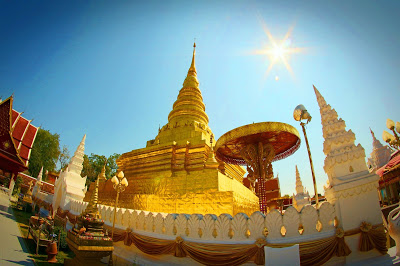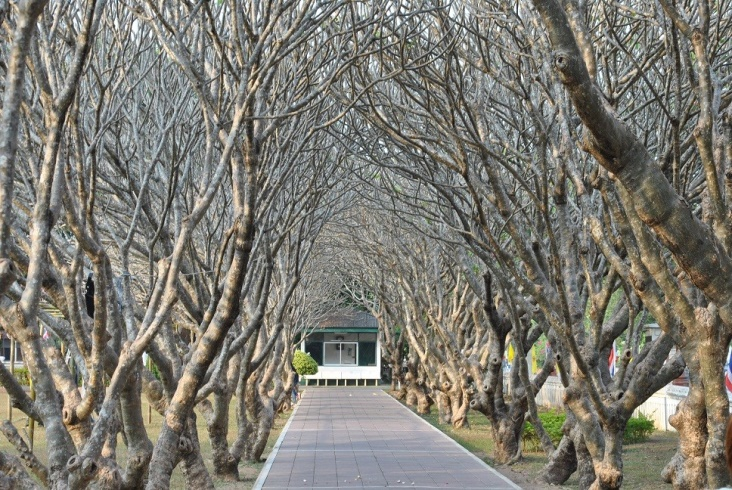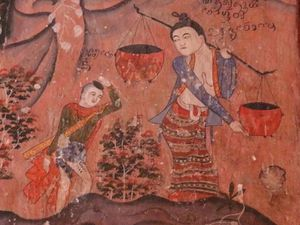


Nan is one of the Northern provinces in Thailand. The area is heavily forested with arable land used mainly for agriculture. It is an ancient city steeped in history with its long association with the Lannathai culture and the Sukhothai kingdom. There are various ways of getting there.
Getting to Nan
Nan is located 670 kilometers North of Bangkok and 330 kilometers East of Chiang Mai. There are several ways to get there.
Air
Nan airport is located a few kilometers North of the old town. Nok Air serves Nan several times daily from Bangkok international airport. Flights take 1 hour and 35 minutes, fares start at around 850 Baht one way.
Train
Nan does not have a railway station. The nearest station is Den Chai in Phrae province, on the Bangkok to Chiang Mai Northern route. The ride from Chiang Mai to Den Chai takes 4 to 5 hours. Fares for 1st, 2nd and 3rd class are 194, 98 and 43 Baht respectively. A bus from Den Chai to Nan, a trip of 150 kilometers takes some 2½ hours at a fare of about 150 Baht.
Bus
Nan is well connected by bus. The bus station is in the Southern part of town just South of Highway 1091. Several companies offer bus services from Bangkok to Nan. Busses leave from Bangkok’s Northern bus terminal Mo Chit. The trip takes between 10 to 12 hours. Fares vary between 400 and 800 Baht depending on the type of service. Busses from Chiang Mai to Nan leave from the Arcade bus station in Chiang Mai. The trip takes around 6 hours. Fares are between 200 to 450 Baht for 2nd class to VIP.

 |
Phra That Chae Haeng Two kilometers past the bridge that spans the Nan River, heading southeast out of town, this temple dating from 1355, under the reign of Pray Kan Muang, is the most sacred wat in Nan Province. It's set in a square, walled enclosure on top of a hill with a view of Nan and the valley. The Thai Lue influenced bôt features a triple-tiered roof with carved wooden eaves and dragon reliefs over the doors. A gilded Lanna-style stupa sits on a large square base next to the bôt with sides 22.5 m long; the entire stupa is 55.5m high. |
Nan National MuseumNan National Museum is housed in the Khum Muang Nan, a large two storey mansion built in 1903 by the last ruler of Nan as his Palace. The informative museum with well laid out displays exhibits items relating to the history of Nan province and the various peoples that live there. Most items have labels in English language. The tunnel of frangipani trees offers different kind of beauty in different seasons. You will experience the green tunnel in summer without frangipani flowers and you will see the bold tree tunnel in winter. Frangipani trees are well aligned looking like a tunnel in front of Nan National Museum. |
 |
 |
Wat PhuminWat Phumin. Nan's most famous wat is renowned for its cruciform bôt that was constructed in 1596 and restored during the reign of Chao Ananta Vora Ritthi Det (1867-74). It is the only temple built as if it were on the backs of two immense snakes (or Naga). Each of the four entries is preceded by a small corridor surmounted by a point shaped finely decorated (underlining the royal origin of the temple) structure and is equipped with smoothly carved doors, with Chinese demon guards in the east, flowers in the north and forest life motives of Lanna-style in the west and the south. |
More Info. : https://wikitravel.org/en/NanDownload : Travel Info |
Hosted by

Sponsored by
